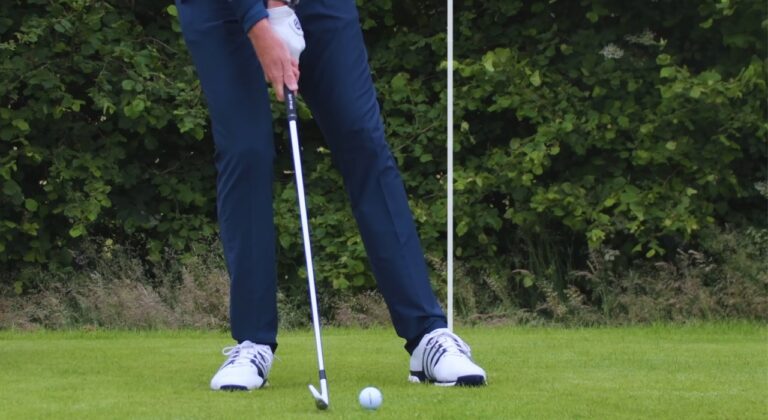Hey there, golf enthusiasts! Ever wondered about the relationship between those high-tech launch monitors and the range balls you use during practice? Well, you’re in the right place. Let’s get started!
Launch monitors have revolutionized the way we understand and play golf. These nifty devices measure various aspects of your golf shot, from speed to spin rate, giving you a detailed analysis of your swing. They’ve become an indispensable tool for players looking to refine their game and understand their strengths and weaknesses.
Now, when we head to the driving range, most of us use range balls. They’re cost-effective and readily available.
So, the million-dollar question arises: how do these range balls interact with launch monitors? Are the readings accurate? Can we trust them to reflect our true performance? Stick around as we explore this intriguing topic.
The Science
At the heart of a launch monitor is a combination of radar technology and high-speed cameras. When you strike a ball, the monitor captures data by tracking the movement and analyzing the club’s impact. It’s like having a personal golf scientist with you every time you swing!
The data collected is vast. From speed and launch angle, to spin rate, these devices capture it all. Once the data is collected, sophisticated algorithms analyze it to provide feedback. Pro tip: Always ensure your launch monitor is on a stable surface to get the most accurate readings.
Accuracy and precision are the hallmarks of a good launch monitor. While accuracy refers to how close the readings are to the actual values, precision is about the consistency of those readings.

The Nature of Range Balls
Range balls are a breed of their own. They’re typically made to be more durable, given the beating they take at driving ranges. This often means a harder outer cover and a modified core. While they’re great for practice, they might not fly as far or as true as premium balls.
| Feature | Range Balls | Premium Golf Balls |
| Outer Cover | Harder for durability | Softer for better feel and control |
| Core | Modified for longevity | Designed for performance |
| Flight Distance | Generally shorter | Longer, depending on the type |
| Cost | More affordable | Pricier |
Given these differences, range balls can indeed affect launch monitor readings. For instance, the harder cover might result in a different spin rate than a premium ball. But don’t fret! Many launch monitors can be adjusted to account for range balls, ensuring you still get valuable feedback.
Factors Affecting Compatibility

Speed and Distance Measurements
One of the primary metrics a launch monitor captures is speed. Now, with range balls being designed differently, they often produce different speeds compared to premium balls.
Spin Rate and Spin Axis
Spin is crucial in golf. It affects how the ball behaves in the air and how it stops once it lands. Range balls, with their unique composition, can produce different spin rates.
Launch Angle and Launch Direction
The angle at which the ball leaves the clubface is the launch angle. While the direction it heads in is the launch direction. Both can be influenced by the type of ball. Range, being harder, might not compress as much, potentially affecting both these metrics.
Trajectory and Carry Distance
The ball’s flight path and how far it travels in the air before landing is crucial for golfers.
Adjusting Launch Monitors

So, how do we ensure our launch monitors give us the best data when using range balls?
Calibration and Customization Options
Most modern launch monitors come with calibration options. This allows users to adjust settings to account for different ball types. Some even have specific settings for range balls.
Software and Firmware Updates
Manufacturers often release updates to improve the accuracy and compatibility of their devices. These updates might include better algorithms for range ball data analysis. Always keep your device updated to get the most out of it.
Practical Implications for Golfers

Alright, let’s talk about what all this means for you, the golfer when you’re out there practicing with range balls and launch monitors.
While range balls might not replicate the exact performance of premium balls, they’re still invaluable for practice. They allow you to work on your swing mechanics, alignment, and other fundamentals. Remember, it’s not just about the distance but also about consistency and technique.
However, it’s essential to be aware of the limitations. If you’re practicing specific shots or preparing for a tournament, try to simulate the conditions as closely as possible. This might mean investing in a few premium balls for your practice sessions.
To get the most out of your practice:
- Use the calibration and customization options on your launch monitor.
- Mix in some premium balls, especially when working on precision shots.
- Focus on consistency in your swing, rather than just the raw data.
FAQ
Is it easier to replace the entire axle than just the CV joint?
Replacing the entire axle can sometimes be more straightforward than just the CV joint. This is because accessing and working on the CV joint alone can be intricate and time-consuming.
Moreover, if one part of the axle is showing wear, other parts might be close to wearing out too. By replacing the entire axle, you ensure that all components are fresh and in top condition. However, the decision also depends on the cost difference and the specific condition of your vehicle’s axle and CV joint.
How challenging is a standalone CV joint replacement?
A standalone CV joint replacement can be moderately challenging, especially for those unfamiliar with the process. It requires the right tools and a good understanding of the vehicle’s suspension and driveline. While some car enthusiasts with experience in auto repair might find it doable, others might find it more complex than anticipated.
Where is the best place to source parts: new, used, or remanufactured?
The best place to source parts often depends on your budget and quality preferences. New parts, especially OEM, are typically the most reliable but can be the most expensive. Used parts can be cost-effective but come with uncertainties regarding their lifespan.
Remanufactured parts are old components refurbished to work like new, offering a balance between cost and reliability. It’s essential to research and possibly consult with a mechanic or other Subaru Forester owners to determine the best option for your situation.
If one CV joint is failing, should I replace both?
While it’s not strictly necessary to replace both if only one is failing, it’s often recommended. This is because both CV joints have likely experienced similar wear and tear. Replacing both at the same time can ensure even performance and might save you from another replacement in the near future. Additionally, doing both simultaneously can sometimes be more cost-effective in terms of labor.
Conclusion
In wrapping up, it’s evident that while there’s a distinction in performance between range balls and premium balls on launch monitors, golfers can still extract meaningful insights during their practice sessions.
It’s all about understanding and adjusting. While practicing with range balls, it’s crucial to focus on consistency and technique rather than just the numbers. When it’s game time, transitioning to premium balls will give you a more accurate representation of your skills.
The discourse around the compatibility of launch monitors and range balls is ongoing in the golf community. As technology advances and our understanding deepens, the conversation will only become richer, guiding golfers toward more informed decisions.
Related Posts:
- How Launch Angle Affects a Golf Shot: The Secret…
- 10 Best Rangefinder For Long Range Shooting 2024 -…
- Why Do Golf Balls Have Dimples: The Science Behind…
- 15 Best Golf Balls for Slow Swing Speed 2024 - For…
- 12 Best Golf Balls for Average Golfers 2024 -…
- Strong vs. Weak Grip: How it Impacts Your Golf Swing















